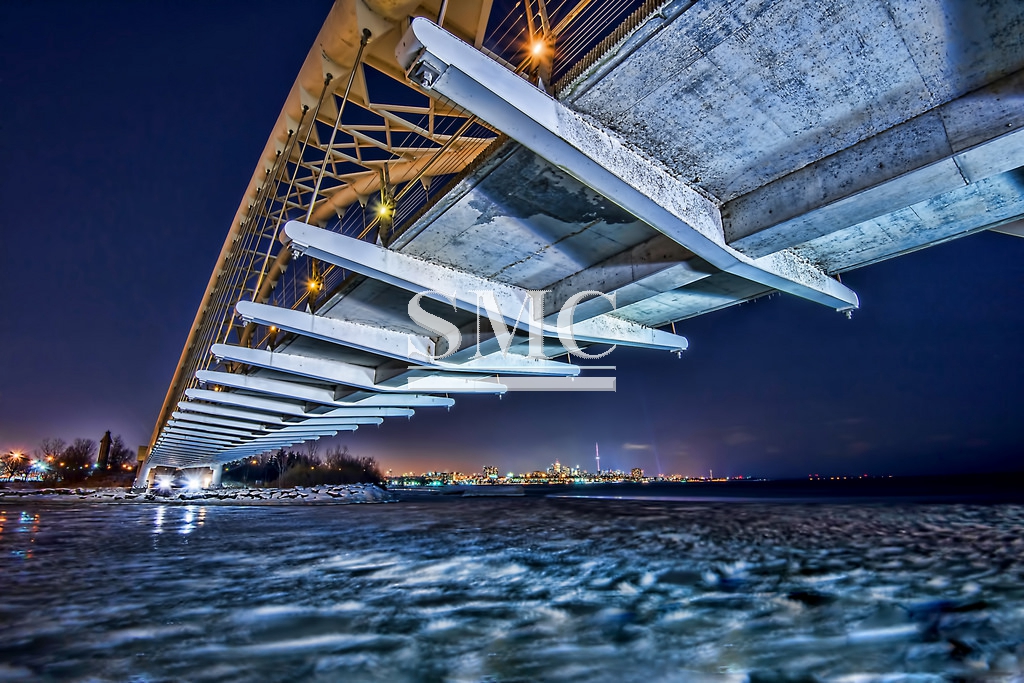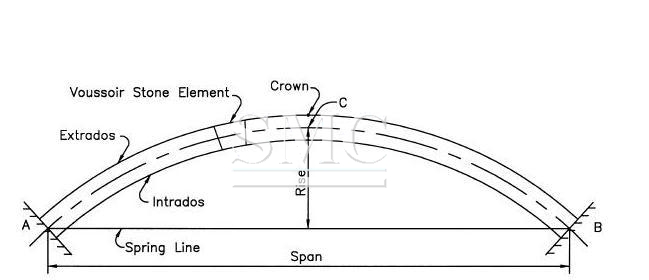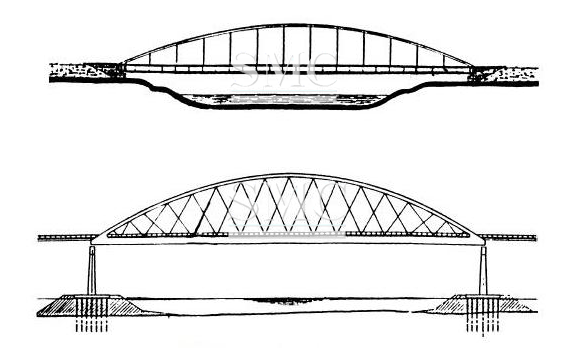The origins of the use of arches as a structural form in buildings can be traced back to antiquity (Van Beek, 1987). In trying to arrive at a suitable definition for an arch we may look no further than Hooke’s anagram of 1675 which stated ‘Ut pendet continuum flexile, sic stab at continuum rigidum inversum’ – ‘as hangs the flexible line, so but inverted will stand the rigid arch’. This suggests that any given loading to a flexible cable if frozen and inverted will provide a purely compressive structure in equilibrium with the applied load. Clearly, any slight variation in the loading will result in a moment being induced in the arch. It is arriving at appropriate proportions of arch thickness to accommodate the range of eccentricities of the thrust line that is the challenge to the bridge engineer.

Indeed, even in the Middle Ages it was valued that brick work curves carried on basically as gravity structures, for which geometry and extent directed tasteful request and dependability. Compressive quality could be depended upon whilst rigidity proved unable. Based upon experience, numerous exact connections between the range and curve thickness were created and connected effectively to deliver numerous exquisite structures all through Europe. The development of the railroad and waterway frameworks prompted a blast of extension building.
Brickwork curves turned out to be progressively well known. With the development of the Coalbrookdal Bridge (1780) another period of curve scaffold development started. Before the end of the nineteenth century cast iron, fashioned iron lastly steel turned out to be progressively prominent; just to be tested by ferro bond (strengthened cement) when the new century rolled over.
During the nineteenth century analytical technique developed apace. In particular, Castigliano (1879) developed strain energy theorems which could be applied to arches provided they remained elastic. This condition could be satisfied provided the line of thrust lay within the middle third, thus ensuring that no tensile stresses were induced.The requirement to avoid tensile stresses only applied to masonry and cast iron; it did not apply to steel or reinforced concrete as these materials were capable of resisting tensile stresses.
Types of arch bridge
There are many different types and arrangements of arch bridges. A deck arch is one where the bridge deck which includes the structure that directly supports the traffic loads is located above the crown of the arch. The deck arch is also known as a true or perfect arch. A through-arch is one where the bridge deck is located at the spring line of the arch. A half-through arch is where the bridge deck is located at an elevation between a deck arch and a through arch. A further classification refers to the articulation of the arch. A fixed arch shown on a picture belo, implies no rotation possible at the supports, A and B. A fixed arch is indeterminate to the third degree. A three-hinged arch that allows rotation at A, B, and C is statically determinate. A two-hinged arch allows rotation at A and B and is indeterminate to one degree.

A tied arch is one where the reactive horizontal forces acting on the arch ribs are supplied by a tension tie at deck level of a through or half-through arch. The tension tie is usually a steel plate girder or a steel box girder and, depending on its stiffness, is capable of carrying a portion of the live loads. A weak tie girder, however, requires a deep arch rib and a thin arch rib requires a stiff deep tie girder. Since they are dependent on each other, it is possible to optimize the size of each according to the goal established for aesthetics and/or cost.

While most through or half-through arch bridges are constructed with two planes of vertical arch ribs there have been a few constructed with only one rib with the roadways cantilevered on each side of the rib. Hangers usually consist of wire ropes or rolled sections. The hangers are usually vertical but truss like diagonal hangers have also been used. Diagonal hangers result in smaller deflections and a reduction in the bending moments in the arch rib and deck.
There have also been arch bridges constructed with the arch ribs tilted so they can be connected at the crown. This is done for aesthetic reasons but it does add to the lateral stiffness of the arch bridge and could result in reduced bracing requirements.
Guest contributors are welcome at the Alloy Wiki.It is a weekly wiki and guide on alloy information and processing technology, while also about the vast array of opportunities that are present in manufacturing. Our team of writers consists of a Machining Material Supplier / Machinist / Tool and Die Maker, a Biomedical Engineer / Product Development Engineer, a Job Development Coordinator / Adjunct Professor, and a President and CEO of a manufacturing facility.
Link to this article:What are the types of arch bridges we know?
Reprint Statement: If there are no special instructions, all articles on this site are original. Please indicate the source for reprinting:Alloy Wiki,thanks!^^


